|
Historic Tijuana Depot Being Restored
By Maria E Curry
July/August 2023
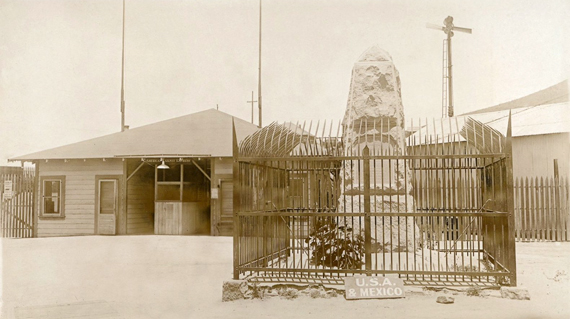 Border Monument #255 looms as a corralled icon to be preserved in this 1918 postcard. It nearly overshadows the wooden station in Tia Juana, California (now San Ysidro). Architectural historian Maria Curry welcomes help in identifying the surrounding buildings. Courtesy Arturo Arrizón Collection
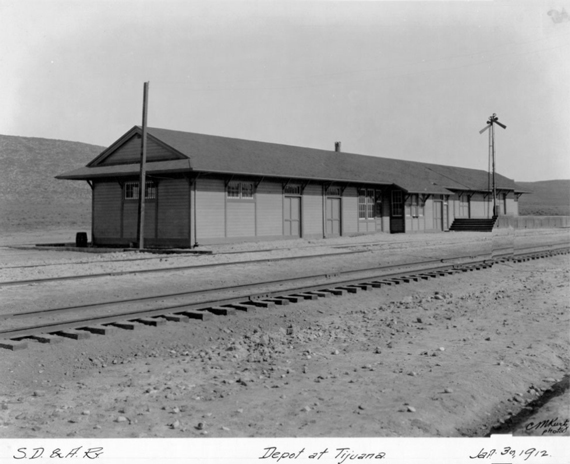 The original Tijuana depot, shown in 1912, was destroyed in a fire in 1917. It measured 168.53 feet long by 25 feet wide. Courtesy Pacific Southwest Railway Museum |
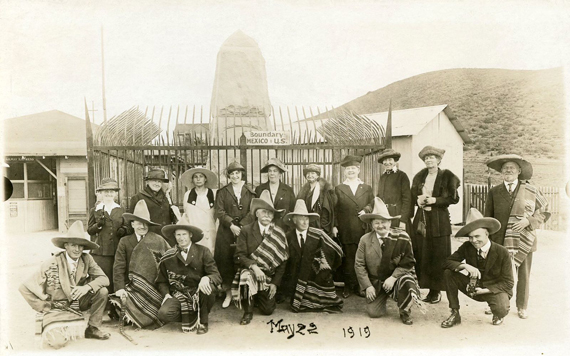 These tourists may have visited the Tijuana Hot Springs, Agua Caliente racetrack, and the city’s main street, now Avenida Revolución, before arriving at the station. Courtesy Arturo Arrizón Collection |
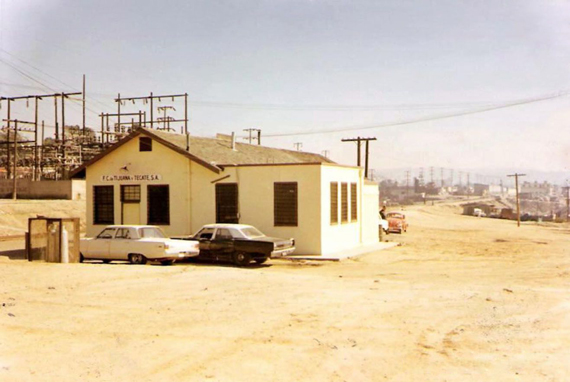 This undated photo shows the Tijuana depot with a sloped roof and the boxy 1947 addition with a flat roof. The station looks nearly identical today. Courtesy Arturo Arrizón Collection |
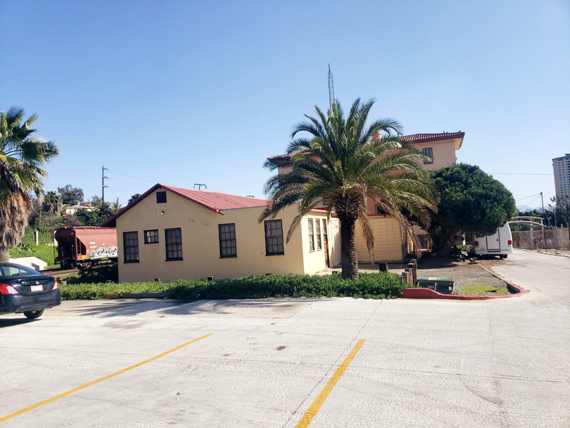 Admicarga (Administradora de la Via Corta Tijuana-Tecate), the company that administers the railroad service, is restoring the depot. As seen in this 2023 photo, the renewal includes restored windows and doors and new paint. Interior elements not from the period of historic significance (1920s-1947) are being removed. The taller 1990s building behind the depot houses Admicarga offices. Photo by Maria Curry |
At last, the Tijuana railroad depot is being restored. The now-empty 1930s train station is a classical style, wood-framed building with a stucco finish and a 1947 addition creating more office space, a bigger warehouse, and installing a safe. Recently, I have been researching the site’s original plans at the Pacific Southwest Railway Museum in Campo, California, with the help of museum historian Bruce Semelsberger.
The Mexican depot stands next to the international border separating Tijuana and San Ysidro, at Kilometer 0 of the Tijuana-Tecate (T&T) railroad, and at mile 15.5 of the San Diego and Arizona (SD&A) line. The SD&A, which was completed in 1919 after 13 laborious and costly years, utilized the T&T track in Mexico because the rugged border topography made it easier to link San Diego and El Centro via Baja California.
The dormant Tijuana depot still sits next to the iconic historic international Border Monument #255 that has signaled the separation of two nations for more than a century. You can see the nearby metal San Ysidro, California freight station through the depot’s lattice fence and when a gate opens to allow freight trains from San Diego to enter Tijuana. Passenger service was discontinued in 1951, but the Baja California state government plans to resume touristic trains this year (2023) from the Tijuana depot to García and Tecate.
An earlier Tijuana station was built at km 1 in 1912 with plans dating from 1910. It was a rectangular building that included a waiting room, luggage room, luggage inspection room, passenger’s dispatcher office, a Wells Fargo and Company office, restrooms, and a freight storage room. (See original plans and elevations with this article.) According to a report in the University of Baja California archives, the building burned in a fire in 1917. It was rebuilt circa 1930 according to 1921 drawings. Only the California Tia Juana depot (now San Ysidro) appears in postcards dated 1918, next to more unidentified structures and monument #255.
Railroad buildings are historical artifacts that tell many stories and histories about a community. They explain economic growth, transportation trends, and social and urban history. The four Tijuana depots that have been built, destroyed, or remodeled through time help us understand more about our border history. Archives contain valuable details about them in railroad work orders, newspaper articles, postcards, and photographs, not to mention architectural plans. These materials provide crucial information for accurate interpretation of these sites and related buildings and structures, as is the case with the Tijuana depot’s restoration.
For further research, I am looking for information, photos, and documents about other historic railroad buildings and related structures along the Tijuana-Tecate railroad, including the García, Valle Redondo, and Tecate stations. If you have any information, please contact me at marucurry@yahoo.com.
Together, we can help preserve the history of the “Impossible Railroad”—the cross-border San Diego & Arizona line built by a determined John D. Spreckles, a super wealthy businessman and San Diego patron—that in fact made it possible to unite two neighboring nations more than a century ago.
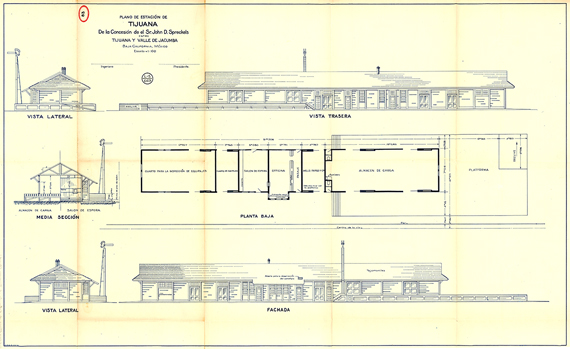 These architectural drawings for the 1912 Tijuana depot show details of the main facades and the floor plan. No signature of an architect or designer appears on the sheet, only initials and a date: H.S.M. 3-24-10. Courtesy Pacific Southwest Railway Museum
|
2025
2024
2023
2022
2021
2020
2019
2018
2017
2016
2015
|









